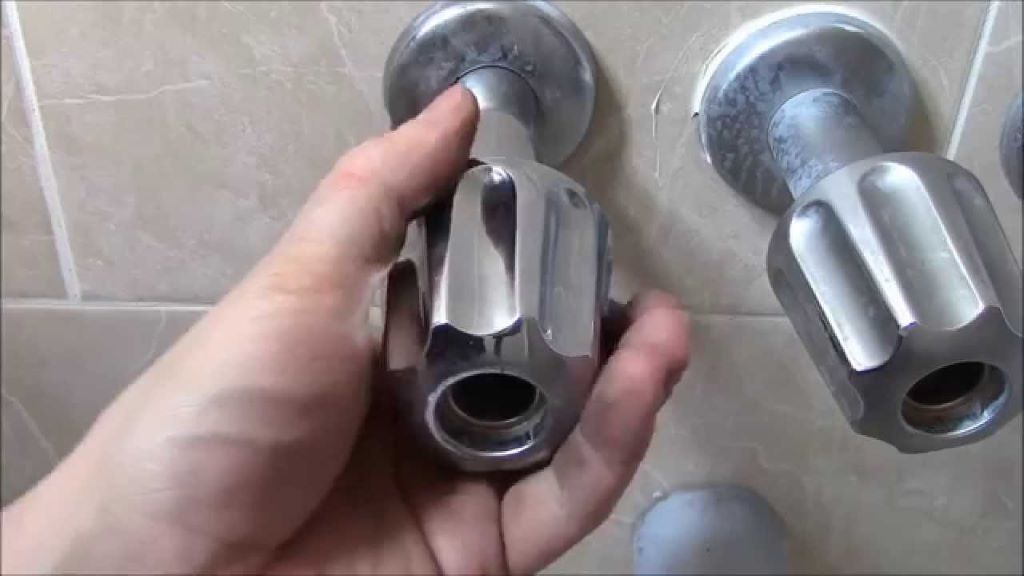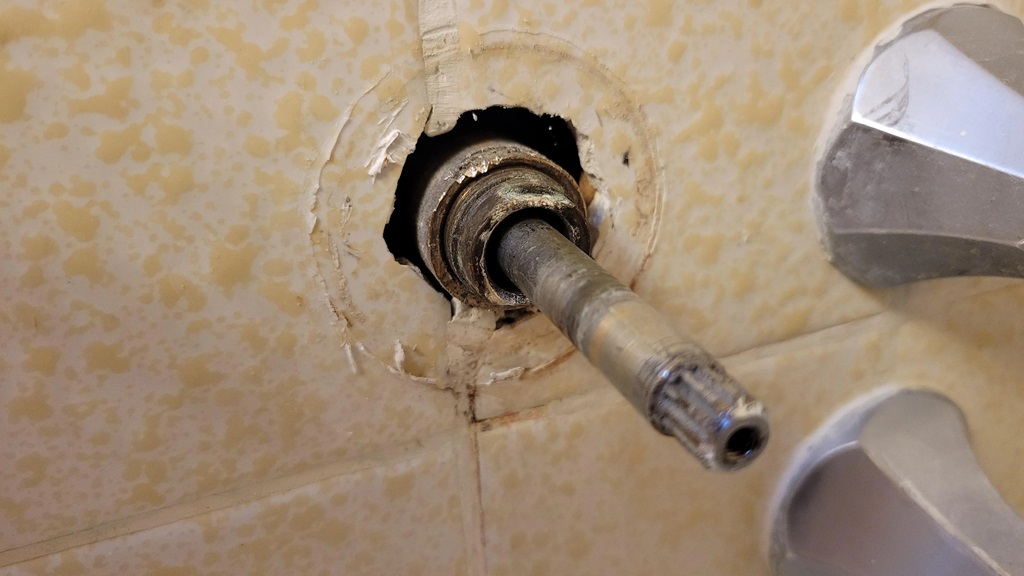
Taking on a bathtub faucet handle replacement project can seem daunting, but with the right tools and techniques, it’s very doable as a DIY job. The first step is to remove the old handle, which can be a bit tricky, especially if it’s been in place for a long time and is corroded or stubborn. In some cases, you may need to use pliers or a wrench to loosen the handle.
Once you’ve removed the old handle, you’ll need to carefully inspect the stem to ensure it’s in good condition before installing the new handle. With some patience and attention to detail, you can successfully replace your bathtub faucet handle and enjoy a fresh, updated look in your bathroom.
Supplies You’ll Need
Before starting, make sure you have the necessary supplies on hand:
- Bucket – to catch any water in the pipes
- Towels – to soak up drips
- Replacement faucet handles – match the old ones or upgrade to a new style
- Screwdriver – flathead and Phillip’s head
- Wrench – adjustable or basin wrench to fit around the tub spout
- Penetrating oil – to help loosen a stuck handle
- Vinegar – to dissolve mineral deposits
- Rubber gloves – to protect your hands
Before diving into the task of replacing bathtub faucet handles, it’s also a good idea to turn off the water supply lines. Locate the shut-off valves underneath the sink or behind the tub and turn them clockwise to shut off the water. This prevents messy leaks while you work and ensures a smoother exploration of how to replace bathtub faucet handles.
Removing the Faucet Handle
With your supplies gathered, it’s time to tackle the handle removal. Follow these steps:
Step 1: Pry Off the Cap
The handle is capped with a dome-shaped piece of metal or plastic. Wedge a flathead screwdriver under the cap and gently pry it upwards. Take care not to damage the finish. The cap should pop right off, exposing the screw underneath.
Step 2: Remove the Handle Screw
With the cap pried off, you’ll see a screw in the center of the faucet stem. Use a Phillip’s head screwdriver to remove the screw by turning it counterclockwise. Place the screw in a safe place for reassembly later.
Step 3: Wiggle the Handle Loose
Here’s where some strength comes in handy! With the screw removed, firmly grasp the faucet handle and wiggle it from side to side while pulling straight outwards. Rocking it back and forth helps break the seal of any mineral deposits or corrosion.
Step 4: Use Penetrating Oil
If the handle still won’t budge, don’t force it. That can damage the faucet. Instead, apply penetrating oil around the base of the handle. Let it sit for about 15 minutes before trying again to remove the handle. The oil will lubricate the stuck connection.
Step 5: Loosen the Set Screw
Some handles have a set screw near the base rather than a screw in the center stem. Check for a small slotted screw and use a flathead screwdriver to loosen it by turning counter-clockwise before pulling off the handle.
Step 6: Remove with a Faucet Puller
For the most stubborn handles that won’t come loose with wiggling and oil, use a faucet handle puller tool. Loop the ends around the base of the handle and crank the center handle of the puller until the faucet handle releases its grip.
Step 7: Clean with Vinegar
Once removed, scrub the faucet stem and handle with a cloth soaked in undiluted white vinegar. This will dissolve any mineral deposits and buildup that may have been holding the handle in place. Rinse thoroughly once finished cleaning.
Removing Specialty Faucet Handles
If you have a specialty faucet handle rather than a standard knob and stem design, use these tips for getting unique handles unstuck:
Cartridge Style Handles
Cartridge faucets have a lever handle that moves up and down rather than side to side. Remove the handle screw or set screw and pull straight out firmly. Use penetrating oil if needed on the cartridge.
Ball Style Handles
Ball faucets have a single lever that moves in all directions to control water flow and temperature. Use a faucet handle puller to pull the handle directly upward to remove it.
Disk Style Handles
Disk faucet handles have a rounded shape and control hot and cold water flow. Unscrew the disk piece from the faucet body with an adjustable wrench before prying off the handle.
Cross Style Handles
Cross handles have a hot and cold handle arranged perpendicularly. Remove the set screws or handle screws before twisting and pulling the handles straight off the stems.
Two-Handled Faucets
For two-handle faucets, remove the screws from the hot and cold handles. Pull directly outwards to remove. You may need to wiggle them loose or use penetrating oil for easier removal.
Spout-mounted Handles
Spout-mounted handles are integrated into the tub spout. Use a basin wrench to loosen and unscrew the spout counter-clockwise to remove the entire spout and handle together.
Cleaning & Replacing Old Handles
Once you’ve conquered the tricky handle removal, take these additional steps to refresh your tub’s fixtures:
- Scrub the faucet exterior and handles to remove gunk and grime with a non-abrasive cleaner.
- Rinse any soap scum and mineral deposits from the tub spout with vinegar.
- Replace any worn-out plumbing washers or O-rings around the faucet stem.
- Make sure any supply tubes going to the faucet are free of cracks and damage.
- Apply plumber’s tape to faucet threads before replacing handles to prevent future sticking.
- Grease the faucet stems and handle bases with petroleum jelly or silicone lubricant.
With cleaned parts and new handles, reassemble your bathtub faucet using the reversal of the steps taken during disassembly. Soon you’ll have an upgraded, functional tub faucet to enjoy for years to come. Nice work!
Frequently Asked Questions
How do you remove a corroded faucet handle?
Corrosion is one of the top reasons old handles get stuck. Use penetrating oil to work its way under the corroded connection. Allow it to sit before trying to remove the handle. Scrub off any mineral deposits around the base with vinegar. Go slowly and gently when pulling corroded handles to avoid breaking the faucet stem.
Why is my Moen faucet handle stuck?
Moen uses a cartridge system, so you’ll need to remove the handle screw, wiggle the handle side to side, and pull directly outwards to remove it. Use penetrating oil around the cartridge if needed. Don’t force the handle or you may damage the cartridge.
How do you get a really stuck round faucet handle off?
Round handles are especially prone to sticking. Use a faucet handle puller for extra leverage. Loop it around the base of the handle and crank the center handle on the puller tool. Apply steady force with the puller as you also try to twist the faucet handle off.
Can I remove my Kohler faucet handle without screws?
Kohler faucets often have decorative handles without screw options. Carefully pry off the handle cap with a flat screwdriver to expose the screw. Use pliers as needed to grip and twist the handle while pulling outward firmly.
What if my Delta faucet handle won’t come off?
Delta uses a ball system that can become stuck from mineral buildup. Use penetrating oil at the base of the handle where it connects to the faucet body. Try gently tapping the handle on opposite sides with a hammer to help break the seal before pulling directly upwards.
How do I get my acrylic handle off my tub faucet?
Acrylic handles are brittle, so be very gentle. Don’t use pliers or pullers. Use lots of penetrating oil and a plastic putty knife to pry underneath and break the seal. Rotate carefully side-to-side before pulling straight out. Go slowly to avoid cracking the acrylic.
Removing stuck handles takes persistence and the right techniques, but with this advice, you can get even the most stubborn handles off successfully.
In Conclusion
Taking off an old bathtub faucet handle starts with gathering the right tools and taking safety precautions like shutting off water supplies. Penetrating oil, vinegar, faucet pullers and wrenches help remove even the most stuck handles, along with some determined wiggling and pulling. When learning how to snake a bathtub, it’s essential to start by carefully removing the faucet handle, especially if it features specialty handles like cartridge, ball, or disc designs, which can be taken off with careful prying and twisting. Once the handle is removed, you can proceed with a full cleaning and faucet refresh, leaving your tub shining like new again. Armed with these tips, you can confidently take on both a stuck faucet handle removal and replacement project yourself.


